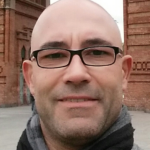"Designing New Economies - Blockchain for Social Innovation"
Traditional market economies have proven incredibly efficient at financing, producing and distributing private goods. At the same time, they continue to prove ineffective in financing and conserving public/common goods, be they forests, wildlife, climate change, social equality or even peace. The so-called “tragedy of the commons” partly explains the root of this problem, relating it to the huge differences in incentives that drive economic agents in markets for private versus common goods.
In mathematical language, anyone who pays for a public good, by increasing the level of production of that public good, is benefiting N people, but is only getting 1/N of that benefit himself. Therefore, interested individuals tend to contribute only to public goods whose benefit/cost ratio is greater than N-to-1. In contrast, an individual buying a television will pay 100% of the cost, but will also enjoy 100% of the benefit, which makes it much easier to make investments based on a benefit/cost ratio of 1-to-1.
Leveraging the capabilities of blockchain technology to design new market mechanisms, the P.R.I.N.G.O – Private Incentives for Common Goods project provides a platform aimed at escaping this issue by realigning incentives in commons economies so that private actors make as significant profits as in private goods markets if their actions bring real value to the common good. P.R.I.N.G.O establishes a strong link between the commons and the video game industry. The rise of digital assets/Non Fungible Tokens (NFTs) in 2021 evidenced that there is a demand from users to own digital goods (a song, a sword in a video game, etc…) and trade them in open and decentralized markets. The rules governing these markets are public (based on open source code deployed on a blockchain), allowing decentralized economies to be built around them.
The platform developed in the context of the project enables the acquisition of real-world commons represented by dynamic NFTs in video games and, more importantly, allows their owners to potentially evolve them according to rules defined through a Decentralized Autonomous Organization (DAO), increasing their market value if their actions match the needs of the commons, generating a recurrent flow of value back to society.
P.R.I.N.G.O obtained a grant in the 2nd ONTOCHAIN call, launched under the Next Generation Internet (NGI) initiative of the European Commission to fund knowledge management solutions based on Blockchain and the Semantic Web that aim to preserve the structuring, integrity and reliability of the information and content of innovative digital initiatives.
About the speaker:

Ignasi Oliva Corrales
Blockchain Innovation Manager in the Department of Cybersecurity & Blockchain R&I. i2CAT Area Foundation.
Ignasi Oliva Corrales is a Technical Engineer in Computer Systems from the Faculty of Computer Science of Barcelona (FIB-UPC). He also holds a Master’s in Blockchain technologies from the Universitat Politècnica de Catalunya (UPC) – BarcelonaTech. As Blockchain Innovation Manager at i2CAT foundation, he led the strategic activities and R+D+I in DLT/Blockchain technologies in the Cybersecurity & Blockchain R&I Area. He has led the Blockchain Observatory of Catalunya, as well as European and national projects in social innovation, health data sharing, digital identity, data space, data privacy, e-voting, cybersecurity – User and Entity Behavior Analytics (UEBA), and e-signature platforms. He has acquired responsibilities in the public and private sectors as a strategic consultant and digital innovation in digital transformation processes and industry 4.0, as well as in eGovernment processing platforms. Ignasi has also been a tutor for the Computer Engineering degree at the International University of Valencia (VIU) and co-authored the chapter on Cloud Application Security: Digital Identity Management in the book DevOps and Cloud Security of the Universitat Oberta de Catalunya.
"The role of digital transformation in the development of the smart grid"
About the speaker:

Jaime Cristóbal Cepeda Campaña
"Virtual Reality in the Rehabilitation of patients. State of the art, research areas and future prospects"
In the past decades, there has been a sharp increase in the application of virtual reality (VR) treatments to the rehabilitation of a range of disorders resulting from lesions of the nervous system, both in motor and cognitive domains. VR can provide functional, rich stimuli (cues) and motivating context (feedback), providing virtual environments (VE) easily changeable, allowing the design of individualized therapies that are adapted to patient needs. In this talk, the basic principles of this technology will be presented together with the main advantages of VR-based applications for both motor rehabilitation and cognitive rehabilitation. We will talk about the main findings achieved in the last decades, as well as future research trends.
About the speaker:

Guillermo Palacios Navarro
Guillermo Palacios-Navarro (1972) received a B.S, M.S. (‘96) and PhD. (‘09) degrees in Telecommunication Engineering from University of Zaragoza – Spain. Following experience as a software engineer in several firms, he joined Teruel Polytechnic School of Engineering in 1998. Since then, he has been with the department of Electronic Engineering and Communications, University of Zaragoza, where he is currently an Associate Professor. Dr. Palacios is the recipient of a “Prometeo Researching Grant” awarded by the Ecuadorian government. He was also a visiting faculty in the Newman Laboratory for Biomechanics and Human Rehabilitation at the Massachusetts Institute of Technology (MIT). Concerning researching activities, he has authored and co-authored several book chapters and numerous articles in scientific journals and international conferences. He also has coordinated several R&D projects and has participated as a member of scientific committees in different workshops and conferences. Dr. Palacios’ research interests include virtual rehabilitation techniques applied to the recovery of neurodegenerative disorders, human computer interfaces and any kind of information technology designs aimed at improving healthcare systems.
"AI vs AI: Viewpoints"
Artificial Intelligence (AI) has become a buzzword in every industry that claims to provide an excellent product/service features to promote its sales and marketing. In many cases, justifications for using AI/ML are not very clear or their technical benefits are poorly understood. There exists more than fifty so-called AI/ML algorithms and heuristics; also, there are other determining factors while choosing a specific AI/ML technique. Moreover, if the environment is unpredictably dynamic, uncertain, misleading, and have man-made obfuscation where behavior profiling or knowledge patterns are difficult to harness, most techniques in practice today may fail. I will discuss some important use of AI in search, optimization, prediction and discovery; how algorithmic bias can impact decisions; how AI can play dual-role and can be applied in many ways with varying intent. I will also exhibit use cases on “Defensive AI and Offensive AI”, and in designing “Digital Twin”. Finally, I will ague that with the significant business benefits of using AI/ML techniques, there exist possibilities of misuse/abuse or inappropriate use of such techniques. So, regulations such as Algorithmic Accountability Act. become essential for AI-based developers to take responsibilities of their products and services.
About the speaker:

Dipankar Dasgupta
Distinguished Lecturer of the IEEE Computational Intelligence Society
Dr. Dipankar Dasgupta is a professor of Computer Science at the University of Memphis since 1997, an IEEE Fellow, an ACM Distinguished Speaker (2015-2020) and an IEEE Distinguished Lecturer (2022-2024). Dr. Dasgupta is known for his pioneering work on the design and development of intelligent solutions inspired by natural and biological processes. During 1990-2000, he extensively studied different AI/ML techniques and research in the development of an efficient search and optimization method has been applied in engineering design, neural-networks, and control systems. He is one of the founding fathers of the field of artificial immune systems (a.k.a Immunological Computation) and is at the forefront of applying bio-inspired approaches to cyber defense. His notable works in digital immunity, negative authentication, cloud insurance modeling, dual-filtering and adaptive multi-factor authentication demonstrated the effective use of various AI/ML algorithms.
"Reliability and Asset Management within the Context of Industry 4.0"
Reliability management is one of the most relevant disciplines nowadays. The powerful influence of Industry 4.0 technologies is opening many new professional opportunities for engineers in charge of asset management in organizations of all kinds. However, there is likely some confusion regarding the difference between maintenance management and reliability management, and which department or area in the organization should lead the implementation of reliability management processes. In this talk, we will present an approach that identifies asset management activities and processes, relating them to various departments and areas of the organization. We will identify the “reliability analysis process” as an integral part of asset management processes and explain how it should support the other processes of the organization.
Alejandro Jiménez is a Mechanical Engineer, Master in Reliability, Maintainability and Industrial Risk, from the Universidad de Las Palmas, Gran Canaria, Spain. He is an expert in reliability, maintainability and industrial risk, with more than 20 years of experience in the field of condition monitoring and reliability management in industrial facilities. Alejandro is certified as a Reliability Engineer ARP-E, Reliability Leader ARP-L, Vibration Analyst ISO CAT III, Industrial Ultrasound Specialist ISO CAT I, by the prestigious Mobius Institute, of which he is also an active member and authorized instructor in vibration analysis, ultrasound and ARP (Asset Reliability Practitioner®) certifications. His extensive experience in condition monitoring and reliability program implementation in diverse industries, countries and business cultures gives him a valuable set of knowledge and skills, with a refreshing vision and a solid approach to industrial reliability growth.
"Artificial Intelligence applied to Energy"
This lecture is about AI applications carried out at the Instituto de Electricidad y Energías Limpias (INEEL) for the energy sector in Mexico. It first introduces AI and the techniques used in these projects: probabilistic graphical models. The first project refers to studying behavioral models applied to wind turbines. By achieving a model of turbine behavior, deviations from normal behavior can be detected, and early failures can be seen. In the following project, a virtual fuel viscosity sensor was designed to optimize combustion in a thermoelectric plant. The virtual sensor is a viscosity estimator based on combustion-related values. Another project involves using dynamic models to predict wind and wind power in a wind farm. Finally, a power transformer diagnostic system was built using pattern recognition techniques based on vibration signals. The transformer’s regular vibration model was generated to detect deviations from this normal behavior.
About the speaker:

Pablo Héctor Ibargüengoytia González
Distinguished Visitor IEEE Computer Society
Pablo Ibargüengoytia holds a degree in Electronic Engineering from the Universidad Autónoma Metropolitana, a Master of Science from the University of Minnesota, USA, and a PhD in Computer Science from the University of Salford, Great Britain, specializing in Artificial Intelligence.
He joined the Instituto de Investigaciones Eléctricas (IIE) in 1983, now the Instituto Nacional de Electricidad y Energías Limpias (National Institute of Electricity and Clean Energies). In 1994, he began his doctoral studies at the University of Salford in England. Since then, he has been dedicated to developing artificial intelligence applications in energy. From 1998 to 2013, he was a Professor at the Tecnológico de Monterrey, Cuernavaca campus, with the Intelligent Systems course. In 2015 and 2016, he taught a class of artificial intelligence applications applied to renewable energies at the Institute of Renewable Energies (IER) of UNAM. He is the author of national and international articles. He is a member of the Mexican Society of Artificial Intelligence (SMIA), Senior Member of IEEE, the Mexican Academy of Computing (AMEXCOMP), and the Academy of Sciences of Morelos (ACMor).
He retired from the institute in August 2019 and since then founded the technology-based company Naatik A.I. Solutions to develop artificial intelligence applications in companies and industries in the country.
"Millimeter-wave Wi-Fi: Communications, Ranging, and Sensing"
While local and personal wireless technologies have greatly evolved in the last few years, new applications and continued usage growth demand greater throughput and reliability with lower latencies. AR and VR applications, distributed computing, and wireless backhaul are just a few applications that require new wireless technologies that can meet and exceed what current wired and wireless interfaces can offer. In addition, there has been an increased interest in high-resolution ranging and sensing applications, such as geofencing, gesture classification, and vital signs monitoring, among many others. Millimeter-wave Wi-Fi is in a unique position to support, potentially with a single chipset, such communications, ranging, and sensing applications. In this lecture, we start by identifying and describing the main PHY and MAC definitions found in millimeter-wave IEEE 802.11 standards: IEEE 802.11ad (2012) and IEEE 802.11ay (2021). We will then cover new definitions and mechanisms introduced by IEEE 802.11az and by IEEE 802.11bf to support ranging and sensing applications, respectively. A discussion of a new IEEE 802.11 effort to integrate millimeter-wave and sub-7 GHz technologies will also be offered.
About the speaker:

Claudio da Silva
Distinguished Lecturer of ComSoc, Meta (Formerly Facebook)
Dr. Claudio da Silva is a Wireless Systems Engineer in the Reality Labs group of Meta Platforms (formerly Facebook) and is responsible for the standardization of wireless connectivity technologies and for advancing Meta’s spectrum policy strategy. He also serves as the Technical Editor of IEEE 802.11bf (WLAN Sensing), a task group currently developing an IEEE 802.11 amendment that enhances Wi-Fi sensing technology, and as an IEEE ComSoc Distinguished Lecturer for the 2022-2023 term.

